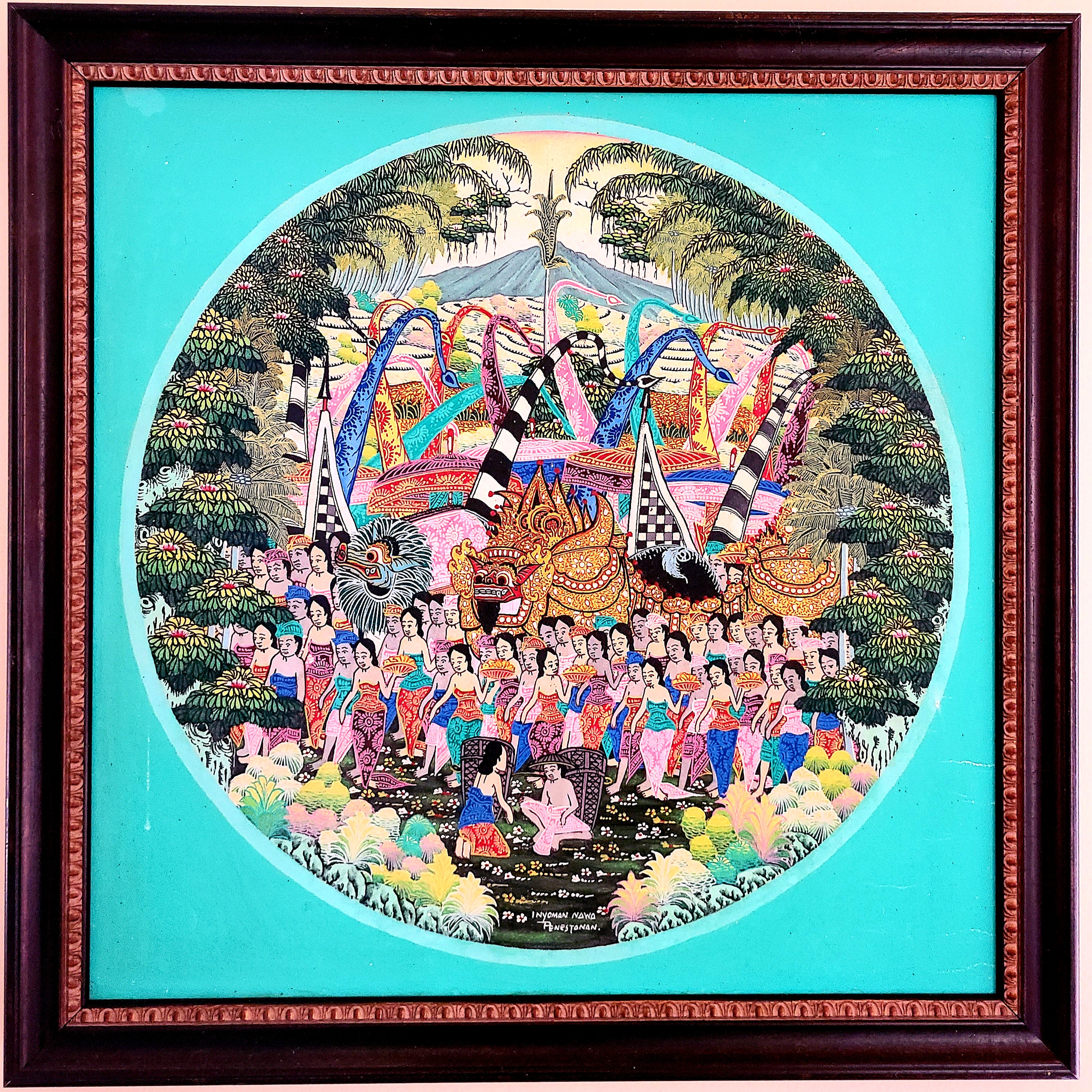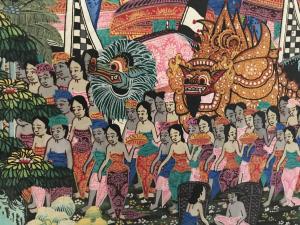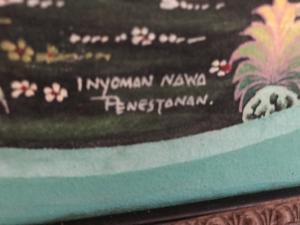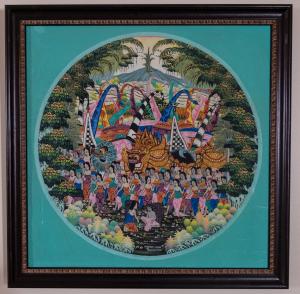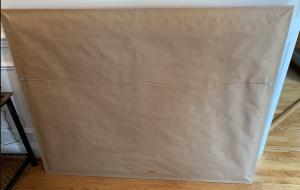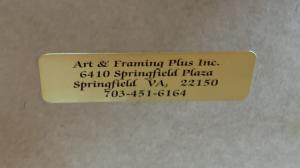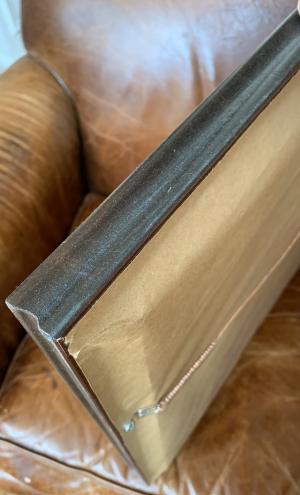Ubud Temple by I Nyoman Arnawa
I Nyoman Arnawa (Nawa)
Painting
Painting by Balinese artist I Nyoman Arnawa from the village Penestanan in Ubud, depicting Balinese ceremony called "Melasti", acrylic on cotton canvas. The painting is signed by the artist.
Purchased from Ubud Genta gallery, the really nice gallery with the buildings spread all over the grounds.
Box 64
Frame By Bill $383
Purchased from Ubud Genta gallery, the really nice gallery with the buildings spread all over the grounds.
Box 64
Frame By Bill $383
Balinese painting has many genres, beginning with the ancient, sacred narrative Classical style displayed in the temples and the houses of the aristocracy. These works are also referred to as Wayang paintings, known as Kamasan paintings, their iconography and narratives being derived from the Wayang Kulit shadow puppet theatre. Other genres evolved in the period 1920 – 1980 from the Classical style. The Batuan paintings developed its distinct visual features and techniques outside of the modern western influences accredited to Walter Spies and Rudolf Bonnet who were instrumental in the birth of the renowned Ubud School of Painting in the late 1920s. Other village styles, or schools developed, Sanur, Pengosekan, Young Artists, and Keliki. The golden years of Balinese painting were 1930 – 1945, during an era that witnessed technical and stylistic innovations along with the first tourism boom on Bali. The second wave of tourism began in the 1970s, and the popularity of Balinese painting increased, especially after 1980 aligned with the national government’s policy of cultural tourism.
This painting by I Nyoman Arnawa represents Young Artists School. During the period of inactivity in the 1930s, an utterly new style emerged in village Penestanan near Ubud. Later to become known as The Young Artists School, teenage artists began to produce refreshingly bold paintings using strong primary colors and simple confident lines. Encouraged by such resident artists is as Dutch artist Arie Smit and Australian artist Donald Friend, this style was characterized by a joyful, childlike, artistry yet contained a youth's insightful view of reality.
The style of Young Artists School was founded in 1956 when Arie Smit was painting a landscape outside Ubud. A 12-year-old boy shepherding a waddle of ducks nearby watched him and began drawing village scenes and people in the dirt. Smit asked him if he would like to come to work for him and learn how to draw on paper and use colors. Soon the talented boy, through the sale of his paintings, was able to buy a cow for his father. Within three years the group of "Young Artists" consisted of 25 boys. Smit's first and most devoted pupil, Nyoman Cakra, still lives and works in Penestanan.
The best Young Artists paintings show the same mastertul sense of color and love of imaginary animals, mysterious spirits, and ordinary country life as did their artistic forebears. This style explores decorative patterns with bright colors, abandoning details. Village Penestan became identical with Young Artist paintings.
Many paintings of Young Artist School are inspired by the Balinese ceremonies. This painting depicts Balinese ceremony called Melasti. Melasti is a Hindu Balinese purification ceremony and ritual, which according to Balinese calendar is held several days prior to the Nyepi holy day - a Balinese "Day of Silence". This ceremony is the ritual to cleanse the world from all the filth of sin and bad karma, through the symbolic act of acquiring the Tirta Amerta, "the water of life". The central figures on the painting are characters from the Balinese mythology: the puppet of Barong Ket in the center, Barong Bangkal on the left, and Rangda on the right. During Melasti ceremony the priest prays and chants his mantras, village communities travel together to their closest source of holy water, and women wearing sarongs carry offerings.
This painting by I Nyoman Arnawa represents Young Artists School. During the period of inactivity in the 1930s, an utterly new style emerged in village Penestanan near Ubud. Later to become known as The Young Artists School, teenage artists began to produce refreshingly bold paintings using strong primary colors and simple confident lines. Encouraged by such resident artists is as Dutch artist Arie Smit and Australian artist Donald Friend, this style was characterized by a joyful, childlike, artistry yet contained a youth's insightful view of reality.
The style of Young Artists School was founded in 1956 when Arie Smit was painting a landscape outside Ubud. A 12-year-old boy shepherding a waddle of ducks nearby watched him and began drawing village scenes and people in the dirt. Smit asked him if he would like to come to work for him and learn how to draw on paper and use colors. Soon the talented boy, through the sale of his paintings, was able to buy a cow for his father. Within three years the group of "Young Artists" consisted of 25 boys. Smit's first and most devoted pupil, Nyoman Cakra, still lives and works in Penestanan.
The best Young Artists paintings show the same mastertul sense of color and love of imaginary animals, mysterious spirits, and ordinary country life as did their artistic forebears. This style explores decorative patterns with bright colors, abandoning details. Village Penestan became identical with Young Artist paintings.
Many paintings of Young Artist School are inspired by the Balinese ceremonies. This painting depicts Balinese ceremony called Melasti. Melasti is a Hindu Balinese purification ceremony and ritual, which according to Balinese calendar is held several days prior to the Nyepi holy day - a Balinese "Day of Silence". This ceremony is the ritual to cleanse the world from all the filth of sin and bad karma, through the symbolic act of acquiring the Tirta Amerta, "the water of life". The central figures on the painting are characters from the Balinese mythology: the puppet of Barong Ket in the center, Barong Bangkal on the left, and Rangda on the right. During Melasti ceremony the priest prays and chants his mantras, village communities travel together to their closest source of holy water, and women wearing sarongs carry offerings.
Height: 20.25
Width: 20.25
Depth: 1.75
inches
Ubud, Gianyar, Bali
village Penestanan, Ubud, Gianyar, Bali
Acrylic on cotton canvas
Painting on cotton canvas is common in Balinese painting. It originates from traditional Wayang Kamasan paintings done on cotton cloth.
I Nyoman Arnawa (Nawa) is the artist from Penestanan, a village just outside the town of Ubud, in Bali, Indonesia, that became the center of Young Artist School in Bali. It has been known as an artist's village since the 1930s when Walter Spies lived there.
